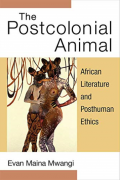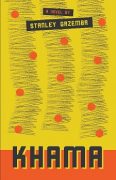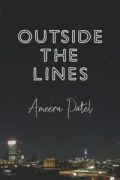C’est le mardi 8 Septembre 2020, un après-midi nuageux dans le quartier Matongé de Bruxelles que nous avons le plaisir de parler avec Celestina Jorge Vindes, propriétaire de Pépite Blues. Pépite Blues, qui se trouve à la rue Anoul 30, est une librairie et un espace culturel où les afro-littératures sont mises à l’honneur. Celestina Jorge Vindes nous accueille et nous répond généreusement et profondément quand on l’interroge sur cette librairie et espace culturel qui incarne beaucoup d’intentions.
Pourquoi cette librairie? Quelle est son importance et quelles sont ses origines ?
Ça remonte au fait d’aimer la littérature et que de ne pas retrouver des livres que l’on a envie de lire dans les autres librairies ; en tout cas pas autant qu’on en a envie et pas dans la lumière dans laquelle on a envie de les voir. C’est l’amour de la littérature. Mais aussi l’idée qu’il y avait des histoires et des vies qui n’étaient pas représentées dans notre espace public et avec la conviction profonde que c’est aussi une partie de nous. Ce n’est pas comme des histoires exotiques que j’avais envie de ramener ici. Ce sont nos histoires et nos vies que j’avais envie de mettre à côté des autres histoires et des autres vies ici. Je pense que c’est un besoin qui est ressenti par de plus en plus de monde. En tout cas, moi, j’ai créé l’espace dans lequel j’aurais aimé aller, voilà.
Il y a surement beaucoup qui ont ressenti ce manque mais qu’est-ce qui vous a poussé à prendre initiative et ouvrir la librairie ?
Je pense que beaucoup de gens ressentent cette absence dans l’espace public mais je crois que chacun le ressent selon sa sensibilité. Ma sensibilité c’était la littérature. Et je pense que la littérature est un moyen par lequel on se rencontre et on fait connaissance et donc lire ou écrire ce n’est pas seulement un rapport aux mots – évidemment plus les mots sont beaux mieux c’est – mais ce n’est pas juste des jolis mots. Ce sont des expériences, ce sont des imaginaires, c’est un rapport au monde. J’avais envie et besoin de partager les univers littéraires et pensées issus de l’Afrique et de ses diasporas. Il y a pour moi comme une nécessité à cela. Ni un luxe, ni un privilège et encore moins quelque chose de superflu.
Et, cette librairie est pour qui ?
Là, c’est une bonne question et je suis heureuse que vous me la posiez parce qu’en un an et demi que personne ne me l’a jamais posé. Parfois moi je prends l’initiative de le dire, mais en fait, c’est pour tout le monde (rit). Pour tout le monde. Pour toute personne qui pense que les gens ne vivent pas dans un monde à part. Tous ceux qui pensent qu’on peut construire un monde ensemble et qu’il n’y a pas plusieurs mondes parallèles. Il peut y avoir des mondes parallèles, mais les conséquences de ces mondes parallèles seront quand-même collectives. Et à partir d’un moment, il faut qu’on ait des espaces où se rejoignent nos différents mondes. On y gagne tous, certains y gagnent à se connaître un peu plus eux-mêmes, à voir leur reflet dans le miroir. Et d’autres y gagnent à connaître un peu plus d’autres personnes et de découvrir que ce qu’ils pensaient ne pas être leur reflet dans le miroir, l’est aussi en fait. C’est une question d’identité. L’identité, moi j’aime bien ce mot parce que – et je crois qu’on oublie toujours – il y a deux parties dans ce mot : il y a le même et l’autre. Donc, c’est pour tout le monde.
Qui sont les clients ?
Concrètement c’est tout le monde. C’était le but et je suis heureuse. Il y a aussi beaucoup de jeunes – des jeunes des tous les horizons. C’est quelque chose qui me plait. Quand je disais que j’avais envie d’être dans un lieu comme ça, ce n’est pas seulement moi en tant que femme noire, c’est tout autant qu’en tant Belge et ainsi de suite.
Pouvez-vous nous parler de la philosophie derrière la sélection de votre catalogue ?
Il y a deux choses auxquelles je fais attention. La première est évidemment qu’il y ait de la diversité de genre : qu’il y ait des livres d’art, les livres enfants, des albums jeunesses, de sociologie, de philosophie, des romans etc.. L’autre critère : ce ne sont pas nécessairement des livres avec lesquels je vais être toujours d’accord. Ça c’est très important pour moi qu’il y ait aussi de la diversité d’avis. Mais, quand même pas quelque chose qui véhicule quelque chose de négatif comme des stéréotypes. Ça c’est quelque chose qui me fatigue. Si ce mot n’était pas aussi chargé aujourd’hui, j’aurai dit que la perspective décoloniale est très importante pour moi. Mais, ce mot est tellement chargé aujourd’hui qu’on ne sait pas ce que les gens mettent dedans. Pour moi, décoloniale c’est tout ce qui déconstruit les rapports de domination qui partent de l’époque coloniale. C’est vraiment cette idée de déconstruction qui m’intéresse, dans le sens où on fait partie d’un monde qu’on pensait donné, qu’on pensait évident et puis on est mené à questionner toutes ces évidences, tout ce que nous croyons. Mais, je n’ai pas besoin d’être d’accord avec tous. Mais, j’ai besoin quand même qu’il y ait une dimension de recherche et de la construction de quelque chose. Et déconstruire pour moi ce n’est pas détruire. C’est questionner pour reconstruire quelque chose d’autre, quelque chose de mieux, de souhaitable.
Que voulez-vous dire par le fait que le mot ‘décolonial’ est très chargé? Qu’est-ce que vous mettez dans ‘décoloniale’ ?
Le fait colonial est une manière de vivre dans ce monde avec une certaine domination – après que vous appeliez ça coloniale, ou que vous appeliez cela autrement – c’est ce type domination qu’il faut renverser. Je ne vois pas ce qu’il y a comme avantage de vivre dans un monde – pour qui que ce soit : pour les blancs et les non-blancs – je ne vois pas quel avantage il y aurait de vivre dans un monde colonial. Parce qu’il n’y a pas de sécurité pour personne dans ce monde-là. Il n’y a de paix pour personne dans ce monde-là. Donc, moi, je pense qu’on se méprend sur le terme ‘décolonial’ qui est de croire les peuples tenus pour subalternes veulent prendre le dessus ou se venger de l’histoire. C’est le souhait de vivre en égaux, et surtout que leur humanité et leurs droits ne soient plus questionnés ou remis en cause. L’idée est donc de justement proposer un monde avec plus de justice. Décoloniser les sociétés, les imaginaires, c’est pour mieux penser la justice sociale.
Est-ce que vous faites des collaborations ?
Ça dépends. Cela arrive que je travaille avec des organisations, des associations, quelques institutions. Ça dépend. Là, par exemple, j’ai réalisé un événement la semaine dernière avec Malcolm Ferdinand autour de son livre Une Écologie Décoloniale – excellent ce bouquin ! Un livre très très très très important, vraiment. Je l’ai organisé en collaboration avec Présence et Actions Culturelles. Donc, quand je pense que ce sont des institutions ou des organisations qui sont en convergence avec ce monde commun que j’essaie de construire, avec grand plaisir. Mais bon, au fil des ans, j’ai aussi décidé de choisir mes partenaires. Au début, en tout cas, j’avais un côté un peu naïf: me disant si quelqu’un travaille sur ces questions-là, c’est que forcément il y a aussi cet horizon de justice sociale. Mais en fait, ce n’était pas tout à fait le cas. Maintenant je prends un peu plus le temps de connaitre les institutions avec lesquelles je travaille.
Pouvez-vous nous parler du pourquoi vous avez consacré autant d’attention et d’espace pour la sélection jeunesse ?
Oui. C’est l’une des sections – alors, elles sont toutes importantes, toutes les sections me sont chères – mais le rayon jeunesse m’est particulièrement cher. Je vais vous donner un exemple. Une fois – donc, ça fait un petit moment que j’ouvre à midi, mais auparavant, j’ouvrais à 11 h. Une fois, j’arrive ici le matin, je suis arrivée à 9 h parce qu’il m’arrive de venir un peu plus tôt et puis j’ai trouvé une dame qui attendait-là alors que j’ouvre deux heures plus tard. Elle est entrée en trombe, elle m’a dit : “est-ce que vous avez une section enfants?” Elle voulait prendre plein de livres. Et donc, je lui ai demandé un petit peu, car j’aime bien discuter avec les gens et elle m’a dit qu’avec sa petite fille, elles avaient pris un livre à la bibliothèque et il y avait une noire dans ce livre. Et comme c’était la première fois, sa petite fille de deux ans a eu peur. Donc, ça dit un peu quelque chose, je pense que le fait de se voir, ou ne pas se voir dans l’espace public construit des imaginaires différemment. Qu’est ce qui peut bien se passer pour qu’elle ait peur ? Ça dit quand même quelque chose. On parlait tout à l’heure de visibilité : d’absence, de présence. Ça dit quelque chose quand même. Cette mère est super, elle emmène son enfant à la bibliothèque. Et pour une fois qu’elle voit un noir dans un livre, elle dit “Géniale! Je vais prendre”, sa petite fille a peur. Voilà, il y a ça. Et puis, je pense que le fait de se voir permet de se construire. On a besoin encore du semblable et du différent, même quand on construit son identité. Ça permet aussi de ne pas être étonné quand, un jour, si son médecin est noir, le petit garçon blanc ne va pas être aussi étonné parce qu’il l’a vu dans un livre. Ce serait normal. Beaucoup de personnes adultes doivent se déconstruire, mais les enfants doivent se construire. Et donc, ma section jeunesse, c’est pour accompagner, donner et mettre sa petite pierre à l’édifice dans la construction des enfants de notre société.
Donc, pour vous, les livres créent des mondes et des possibilités ?
Exactement. J’aime bien le mot ‘possibilités’. C’est très drôle parce que c’est un mot que j’aime beaucoup utiliser. C’est vraiment ça. C’est ouvrir. Ça ouvre le monde, en fait, ça l’élargit.
Comment observez-vous les gens utiliser l’espace de la librairie ?
J’aime bien l’idée de ‘maison’. Il y a deux choses : au début, pendant presque une année, j’ai déjà eu des personnes qui sont rentrées ici en pleurant. Des adultes. Ça me rendait aussi émue. C’était de se dire on avait un espace qu’aurais jamais cru avoir. Et du coup, ça me rendait si émue. Et puis aussi, la deuxième partie, c’est de voir combien de personnes, celles qui viennent de plus en plus ou celles qui ne viennent pas, m’appellent pendant le COVID. “Qu’est-ce qu’on doit faire ?” “Qu’est-ce qu’on peut faire ?” “Est-ce qu’on doit donner de l’argent ? Et on viendra chercher des livres après ? Histoire que la librairie tienne.” “Si tu as besoin d’aide, appelle.” C’est vraiment devenu une communauté de la librairie. C’est notre librairie. Et moi, j’ai envie que les gens se l’approprient. J’aime bien l’idée aussi que quand on vient ici, on ose poser des questions. J’ai déjà été dans des espaces où on est mal à l’aise de poser certaines questions. Ici, parfois, il y a des débats où il y a des gens qui ne sont pas d’accord, y en a qui sont d’accord et on le dit et on en discute. Et ça, c’est très important pour moi qu’on se sente suffisamment à l’aise et suffisamment bien, qu’il y ait cette idée de maison, communauté de la librairie et une communauté très diverse, pas une communauté homogène. J’aime le fait que les gens s’approprient l’espace. Je n’ai pas spécialement envie moi d’incarner cette librairie. J’ai envie que, justement, cette communauté l’incarne. Le fait de partager tout ça, c’est de partager une vision du monde, mais aussi des visions des gens qui nous ont précédés.
Comment avez-vous vécu le confinement et la fermeture des librairies dû à la pandémie du COVID-19 ?
J’ai essayé de stresser le moins possible. Honnêtement, plus que le matériel, c’est vraiment les personnes. Les personnes me disent : “Écoute, si tu as des problèmes, nous sommes là. On va venir renflouer les caisses et ensuite on viendra, on verra sur le long terme, on ira chercher les livres.” Rien que ça. Ou “comment tu vas?” ou “est-ce que tu as besoin de quelque chose pour la librairie ? Nous sommes là”. Rien que ça. C’est ce qui m’a permis de ne pas trop m’inquiéter. D’où le fait que je disais que c’est une communauté de la librairie. Et encore une fois, ça venait vraiment de tous les côtés. Ça m’a beaucoup touchée. C’était beau, un beau monde.
Quelles sont vos souhaits, votre vision pour le futur de l’espace ?
L’espace n’a pas encore son format définitif. Je voudrais une partie néerlandaise, et anglophone plus grande que celle que j’ai. Elle a commencé à grandir. Maintenant, il y en a suffisamment pour que je commence à les introduire sur les autres étagères. Donc, ça, c’est le souhait à court terme qui fait partie vraiment de la constitution de la librairie parce que l’idée aussi était celle-là : néerlandais, anglais, français. Je me suis dit on est quand même à Bruxelles, en Belgique et que finalement, le monde commun c’était aussi ça ? J’ai envie, évidemment, que tout le monde se sente le bienvenu. Et qu’il y ait aussi plus de livres en langues africaines – ça, c’est aussi quelque chose sur laquelle je travaille. Pour l’instant, on a une maison d’édition Belge qui travaille dans des langues congolaises. Ça, c’est super, mais je voudrais en avoir plus ; d’avoir toutes ces langues aussi, c’est quelque chose qui fait partie intégrante du projet. Et vraiment, continuer de recevoir des auteurs. Jusqu’à présent, il n’y a pas un seul auteur que je peux dire “Celui-là, c’était génial et l’autre un peu moins.” Tous, tous, tous m’ont emporté. C’était à chaque fois des tourbillons. C’était des gens entiers en termes d’engagement et d’idées. C’était à chaque fois très riche. J’ai hâte que ça continue. C’est vraiment quelque chose que j’ai envie de plus en plus de vivre – et pas seulement de le vivre, de le partager aussi. Du coup, voilà ça, ce sont les perspectives pour l’instant.
Merci pour la générosité !
Merci d’être venues !
Pépite Blues, rue Anoul 30, Ixelles (Bruxelles)
Adja Sy & Amber Frateur (diplômées en études africaines à l’université de Gand)




